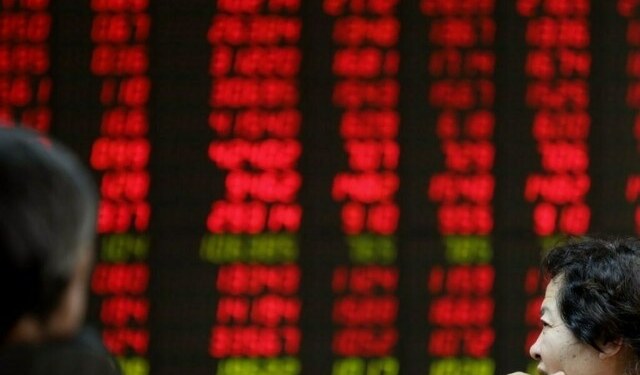 Job Market Has Delivered for Trump, But 2018 May Be Tougher
Job Market Has Delivered for Trump, But 2018 May Be Tougher(Bloomberg) — The U.S. job market performed better than economists expected during President Donald Trump’s first full year in office. Repeating such gains may be considerably tougher in 2018.
The economy probably added 2.11 million jobs in 2017, including an estimated in December, the median projection of economists surveyed by Bloomberg ahead of Labor Department data due Friday. That would exceed the roughly 1.98 million that analysts were forecasting before the year began. The expected of 4.1 percent last month, unchanged from November, is well below the 4.6 percent economists had penciled in a year ago for the fourth quarter.
While not impossible, a similar performance is seen as unlikely given the jobless rate is below what the Federal Reserve regards as sustainable and employers are struggling to find quality applicants to fill openings. Even with an expected growth boost from Trump’s signature achievement of a $1.5 trillion tax overhaul, economists project job gains to fall back a bit — a trend that carries a potential silver lining of a long-awaited acceleration in wages.
The 2017 job gains are “pretty solid, particularly in an economy that by most traditional measures is at or beyond full employment,” said Mark Vitner, senior economist at Wells Fargo Securities LLC. “With the labor market tightening, it is tougher to fill openings, so you would expect employment to slow a bit.”
In fact, that’s already happened. Put into a broader context, 2.11 million jobs would be the smallest gain since 2011 and extend a natural slowdown from a recent peak of 3 million jobs in 2014 under predecessor Barack Obama.
Trump often touts the job gains and low unemployment rate, crediting policies including tax cuts and deregulation for contributing to rising business confidence and a surging stock market. At the same time, employment has benefited from the momentum of an eight-year-old expansion begun under Obama as well as accelerating global growth.
“The entire global economy had a very good 2017,” said Mark Zandi, chief economist with Moody’s Analytics in West Chester, Pennsylvania, who works with ADP Research Institute on a separate monthly private payrolls report. “It’s a very good performance, about as good as you could hope for.”
|
What Our Economists Say “Bloomberg Economics is forecasting a slightly above-consensus payroll gain of 205,000. Until labor costs begin to increase more appreciably, faster economic growth heading into year-end (and the start of 2018) should translate into firmer hiring, as well. Ultimately, rising labor costs will drive businesses to increase investment in labor-saving capital — and this will ultimately drive a productivity rebound — but in the meantime it simply means faster job gains.” — Carl Riccadonna, Bloomberg Economics |
A private-sector report on Thursday showed companies added in the U.S. in December, more than expected. Weekly unemployment claims rose to a seven-week high, according to the Labor Department, though such figures tend to be volatile around holidays.
Trump last month signed into law the most extensive rewrite of the U.S. tax code in 30 years. The legislation cuts the corporate tax rate to 21 percent from 35 percent and reduces taxes on most individuals.
Zandi estimates the tax overhaul is likely to spur an additional 300,000 jobs in 2018, though he says 2017’s gains mainly reflected momentum in the economy that carried over from the prior year.
Economists surveyed by Bloomberg see U.S. employment gains slowing to 154,000 a month by the fourth quarter from roughly 176,000 a month in 2017, according to the median estimate in a survey last month before the tax bill passed.
The reason: workers are just becoming more scarce. Thirty percent of small-business owners had job openings they couldn’t fill in November, according to the National Federation of Independent Business’s monthly survey. Hiring qualified workers was ranked as the second most-important problem, after taxes.
“I hear anecdotes from firms that tell me they’re having a hard time finding workers,” Fed Chair said last month. “We expect the pace of job gains to moderate over time.”
The central bank has been raising interest rates in part to ensure the labor market doesn’t overheat and push up inflation too much, with policy makers penciling in three quarter-point hikes in 2018, the same number as last year. Fed officials judge full employment to be consistent with a jobless rate of around 4.6 percent.
The Federal Open Market Committee continues to expect the tightening labor market to show up in higher wages and inflation over the medium term, according to from the committee’s Dec. 12-13 meeting, released Wednesday. Most participants reiterated support for gradual hikes.
Trump has predicted his tax plan would contribute to higher wages, which has been largely missing from the expansion. Average hourly earnings likely rose 2.5 percent from a year earlier in December, unchanged from November’s pace, and below the gains of more than 3 percent prior to the 2007-2009 recession.
“This gets us better wages, bigger paychecks, lower taxes,” Trump said last month.
Some economists agree with the president, at least for the current year.
“Last year’s slowing in job growth was the natural result of an economy that is running out of spare labor,” said Michael Feroli, JP Morgan’s chief U.S. economist. With the tax overhaul boosting growth modestly, “it is reasonable to conjecture that the effect of higher labor demand may be more apparent in higher wages than in faster job growth.”
Source: Investing.com





























